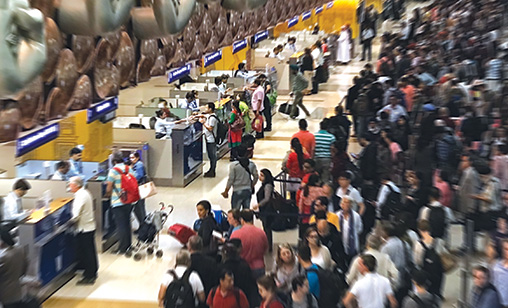Year in Review
Changes and challenges In 2018
In Asia-Pacific aviation in 2018, achieving digital transformation rapidly rose to the top of the agendas of the region’s airlines, airports, ATMs and suppliers. Despite the complexity and the cost of incorporating advanced digital technology into their airlines, the shift to digitally based operations promises carriers lower costs, more accurate, real time applications of critical information and forensically targeted customer engagement. But the analysis and multi-billion investments required to implement digital blueprints across the industry were only one of the challenges that Asia-Pacific carriers faced in the last 12 months. Since January this year, fuel costs jumped, U.S-Sino trade tensions opened a fault line in the region’s growth forecasts, problems at engine manufacturers were still causing costly delays in new aircraft deliveries and airports continued to crowd up. Some traditional alliance relationships have been severed and technology was reshaping aviation workforces. Several carriers have thrived but some have failed. The threat of cyber assault became real rather than predicted. Air passenger growth forecasts increased as the year drew to a close with China and India, fueled by low-cost carrier expansion, holding their positions as the two fastest growing aviation markets in the world. Chief correspondent, Tom Ballantyne, reports on another groundbreaking year in Asia-Pacific aviation.
December 1st 2018
At the Association of Asia-Pacific Airlines 62nd Assembly of Presidents in Jeju, South Korea, in October airline delegates passed resolutions to redress restrictive regulatory regimes that govern safety and cross border manpower demands, the retrogressive trend to a patchwork of emissions taxes and a commitment to fighting wildlife trafficking at airlines. Read More »
After a stellar accident-free 2017, the current year was heading in the same direction until the loss of a Lion Air B737 MAX in November, which took the lives all 189 passengers and crew onboard. Investigations are continuing into the cause of the accident.
 |
In November, new International Civil Aviation Organization (ICAO) rules, that require all aircraft to be tracked at least every 15 minutes while in flight, came into force. The regulation was written in response to the still unresolved disappearance of Malaysia Airlines MH370 and all its passengers and crew over the Indian Ocean on March 8, 2014.
For airframe and engine manufacturers, 2018 has been witness to bulging order books that will keep OEM production lines humming for the next decade. Problems with new generation Pratt & Whitney and Rolls-Royce engines, and to a lesser degree those manufactured by joint venture CFM, are seriously delaying delivery of Airbus and Boeing aircraft to customers.
Nevertheless, new ultra-long haul (ULR) aircraft such as the A350 and the B787 are producing an ever shrinking world. In March, for the first time, Qantas Airways connected Australia with Britain when it launched its B787 Perth to London route. In October, Singapore Airlines (SIA) chose the A350-900 ULR to re-launch non-stop flights, after a five-year hiatus, from Singapore to New York.
Despite considerable industry scepticism, more long-haul low-cost routes have been introduced to the global network this year. AirAsia X, Scoot, Cebu Pacific and Jin Air have extended their operations to destinations including Hawaii and Europe.
Airlines investing in training centres include the first of two green field Qantas pilot academies in Australia, Singapore Airline’s joint venture with Airbus and also with Boeing and CAE and the Thai International Airways partnership with Airbus in U-Tapeo south of Bangkok.
Asia-Pacific airlines transport an estimated 40% of the world’s air freight. After a big spike last year, some heat has gone out of the market in 2018 which will be threatened if the trade war between China and the U.S. escalates.
All in all in the Asia-Pacific, 2018 has seen the best of the region’s airlines shown out as they build the region’s collective airline revenue.